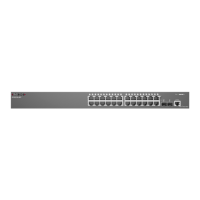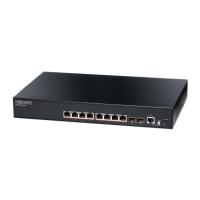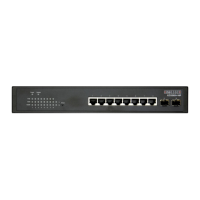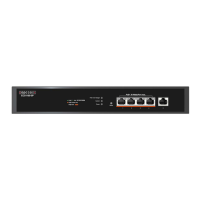Chapter 22
| Quality of Service Commands
– 539 –
Example
This example creates a policy called “rd-policy,” uses the
class
command to specify
the previously defined “rd-class,” uses the set cos command to classify the service
that incoming packets will receive.
Console(config)#policy-map rd-policy
Console(config-pmap)#class rd-class
Console(config-pmap-c)#set cos 3
Console(config-pmap-c)#
police rate
This command defines an enforcer for classified traffic based on the metered flow
rate. Use the
no
form to remove a policer.
Syntax
[
no
]
police rate
committed-rate
committed-rate
- Committed information rate in kilobits per second.
(Range: 16-1000000 kbps at a granularity of 64 kbps or maximum port
speed, whichever is lower)
Default Setting
None
Command Mode
Policy Map Class Configuration
Command Usage
◆
You can configure up to 16 policers (i.e., class maps) for ingress ports.
◆
The
committed-rate
cannot exceed the configured interface speed.
◆
Policing is based on a token bucket, where bucket depth is the maximum burst
before the bucket overflows, and the average rate tokens that are added to the
bucket is by specified by the
committed-rate
option. Note that the token bucket
functions similar to that described in RFC 2697 and RFC 2698.
◆
The behavior of the meter is specified in terms of one token bucket (C), the rate
at which the tokens are incremented (CIR – Committed Information Rate), and
the maximum size of the token bucket (BC – Committed Burst Size).
The token bucket C is initially full, that is, the token count Tc(0) = BC. Thereafter,
the token count Tc is updated CIR times per second as follows:
■
If Tc is less than BC, Tc is incremented by one, else
■
Tc is not incremented.

